Paco Rabanne: Life of the Space Age designer behind chainmail dresses
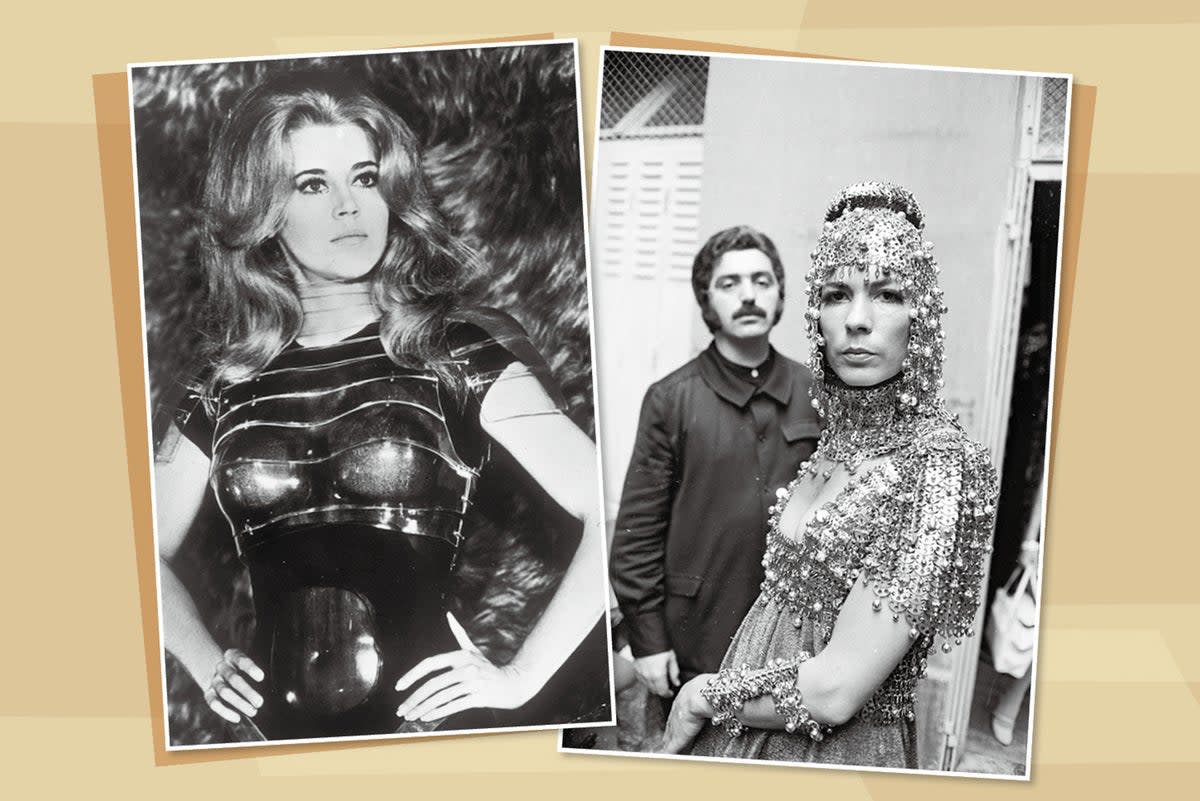
Paco Rabanne, a master of the Space Age couture that defined the 1960s, has died at 88 years old in Portsall, France.
The Avant Garde fashion designer has been an enigma in recent years, following his step back from fashion at the turn of the new millennium. Though his later years were not spent in the spotlight, the influence of his experimental designs on the industry remains inescapable.
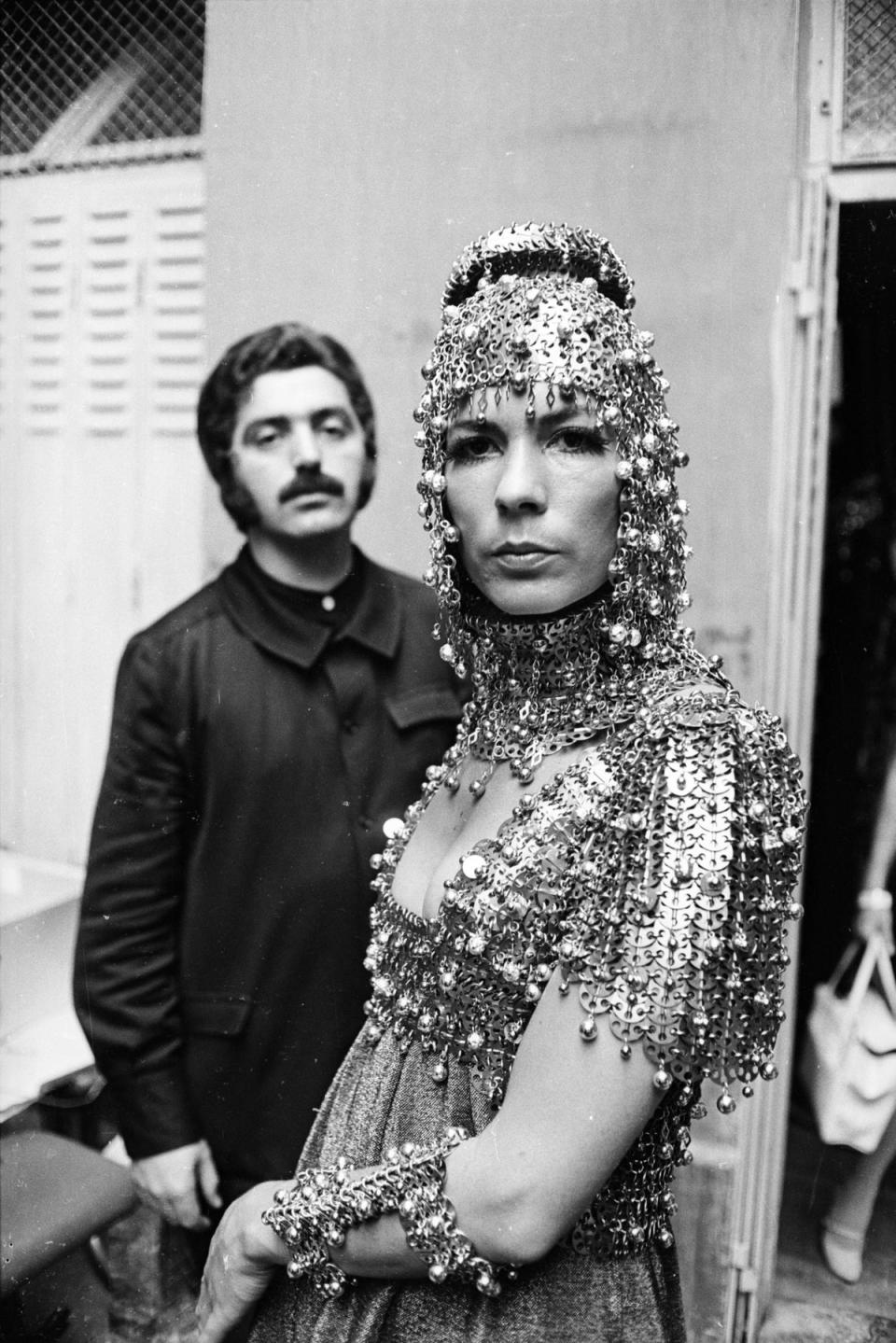
His revolutionary chainmail dresses, which were the talk of Paris following his debut collection at the Hotel George V on February 1, 1966, remain as desirable as ever. His eponymous house continues to produce collections which nod to his archive today, and his perfume empire, which conglomerate Puig bought him out of in 1986, continues to boom.
A spokesperson from Puig confirmed Rabanne’s death. “Paco Rabanne made transgression magnetic. Who else could induce fashionable Parisian women to clamor for dresses made of plastic and metal?” José Manuel Albesa, the head of Puig’s fashion and beauty division, told WWD.
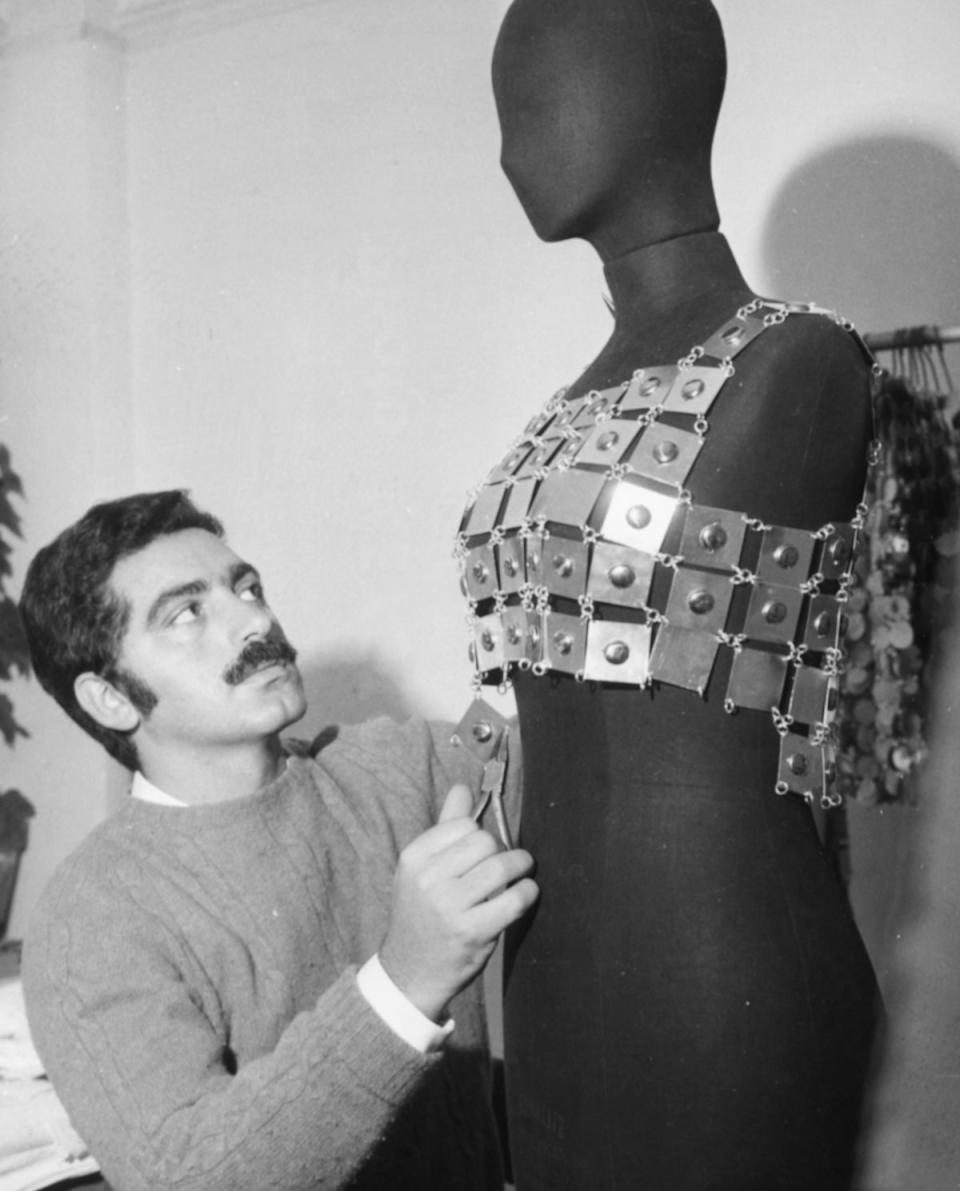
Rabanne was born in the Basque region of Northern Spain in 1934, and was introduced to fashion design by his mother who was a head seamstress at renowned Spanish couturier Cristobal Balenciaga’s atelier in San Sebastián.
After studying architecture at the École Nationale Supérieure des Beaux-Arts in Paris, which was in part funded by sales of his exceptional fashion illustrations, Rabanne began climbing his up through the upper echelons of the design industry.
In his early years, this was defined by the out-of-the-box accessories he produced, often using rhodoïd plastic, for top courtiers including Dior, Nina Ricci and Balenciaga. In 1966 he presented the first collection under his own name, called “Twelve Unwearable Dresses in Contemporary Materials.” For added modern shock factor, models walked out barefoot in his sci-fi, gladiator style outfits.
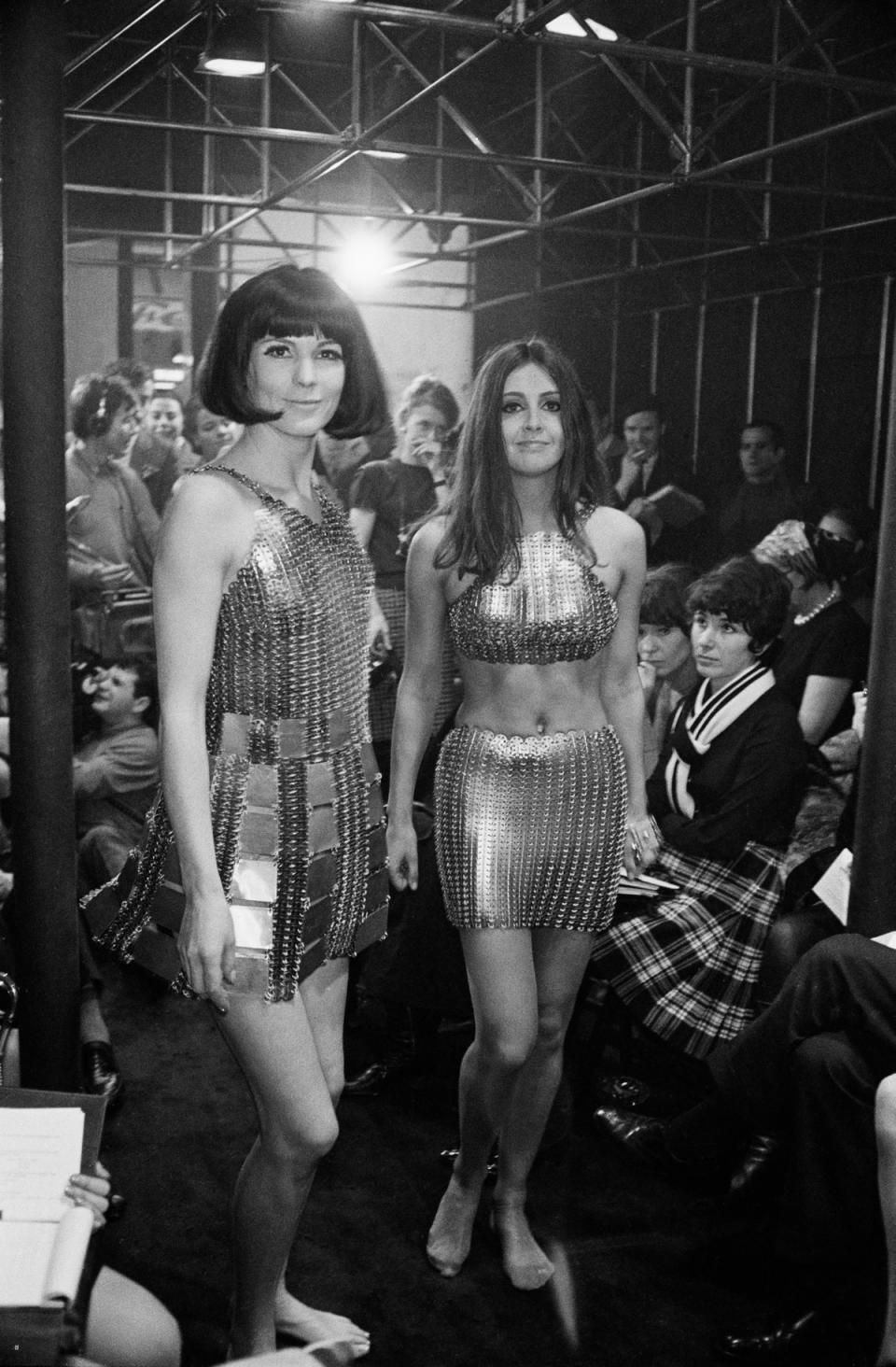
One of these dresses, crafted from aluminium plates with metal joints, is part of the Metropolitan Museum of Art’s permanent collection, and holds distinct likeness to the those which continue to define the Paco Rabanne collections today.
Rabanne’s next collection, shown in April 1966, caused further uproar as Parisian cabaret stars modelled swimwear made of leather and rhodoïd discs in strip tease style. These two shows saw him explode onto the couture scene, and earn him the title of an ‘enfant terrible’.
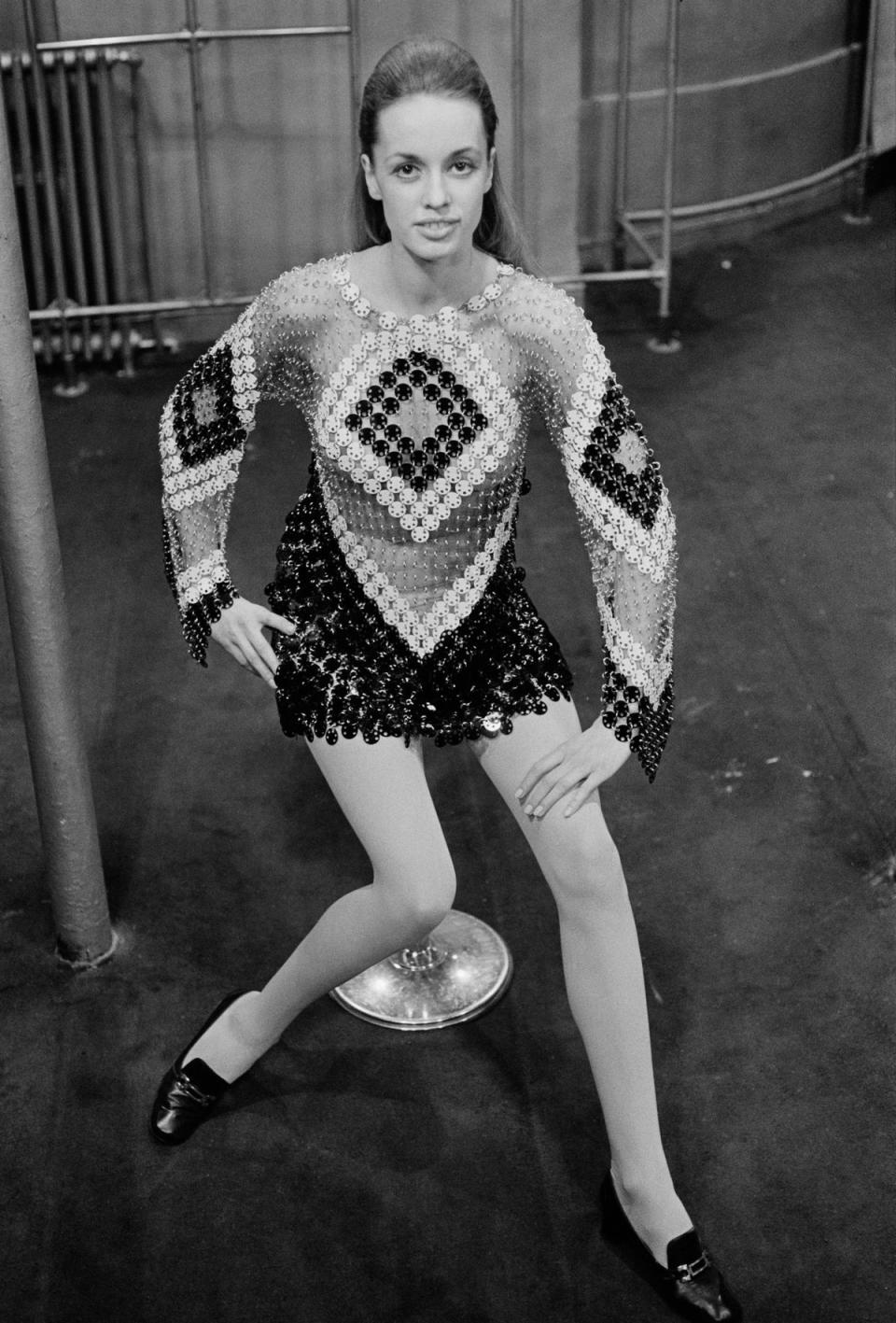
His innovative use of unlikely, industrial materials is what separated him from the rest. The futuristic silhouettes helped define the Space Age revolution which defined luxury fashion of 1960s, alongside other designers including Pierre Cardin and André Courrèges. While they shared an aesthetic, Rabanne’s unimaginable outfits were unique for their use of acrylic discs, paper and steel. It lead to Coco Chanel dubbing him “the metal worker.” His other experiments included knitting with fur, making block moulded garments, and creating outfits using buttons, coconuts and wood.
It did not all play out the catwalk, however. Rabanne was admired for his costume design. Most famously, he created the green disc mini dress worn by Jane Fonda in Roger Vadim’s 1968 film Barbarella, and other cinematic highlights include creations in Casino Royale and Two for the Road, both released in 1967.
Looking back to the archive shots of his collections between 1966 and 1999, most of his creations feel as unorthodox and radical as ever. It is the legacy of a daring and furiously creative original.

 Yahoo Lifestyle
Yahoo Lifestyle 
